Just as emperor Barbarossa drowned in the Saleph river during the Third Crusade, the Germans would eventually be stopped at the Don and Volga in 1942 in their attempt to occupy European Russia. You will know that part of the story of the war in the East, as told in countless books and wargames and in the original Unity of Command and its first DLC, Red Turn. Black Turn covers the first part of that epic tale, where you’ll get the chance to rewrite the rest of the story by capturing Moscow.
First, a summary of the situation you’ll be facing in the various campaign scenarios.
The initial scenarios cover the drives to Pskov and the Luga beyond it by Army Group North, to Minsk and Smolensk by Army Group Center, and to Kiev and the banks of the Dnieper by Army Group South and Army Group Antonescu. Time works against you, but you have strong mobile forces and enough supporting infantry to deal with any Soviet resistance.
- Army Group South
- Army Group Center
- Army Group North
At the halfway point, you’ll secure the flanks of Army Group Center by isolating Leningrad, encircling Southwestern Front and parts of Southern Front and moving towards the Crimea and the Donbas cities.
Late in the campaign season, you will launch an epic attack on Moscow in the shape of operation Taifun. Should you capture the city, Army Group North will attempt to capture Leningrad with Finnish support and the Germans will launch an unexpected attack in the south just as the Soviets are massing for their own offensive.
As the Soviets, you’ll push Army Group Center back from Moscow in two standalone scenarios covering the December offensive with the aim of clearing the approaches to Moscow and the general offensive in January, designed to encircle and destroy most of the Army Group.
The scenarios vary in difficulty, with some of the earlier ones being harder than you might expect as you’ll be hard-pressed to repeat the initially spectacular historical advance. As Soviet resistance stiffens, the Germans will need to slow down the pace of their offensive to allow the infantry to catch up with the Panzers. In Taifun, the Germans will launch a final everything or nothing attempt to capture Moscow before the end of the year.
The majority of the objectives are historical. Sometimes a slightly more ambitious objective was added to present the player with an additional challenge, but generally speaking your virtual soldiers will march in the footsteps of their historical counterparts. The two hypothetical scenarios, designed by Tomislav, cover what-if situations, although the units involved and the objectives are either partially historical (in the case of the enlarged Tikhvin offensive) or reasonable objectives that can serve as staging points for future offensives (for the scenario in the south).
As soon as the first autumn rains arrive, the weather will be an enemy that you might fear more than the Soviets, as mud will slow your advance down to a crawl and give the Soviets time to reorganize their defences.
Your mobile units are superior in every way to Soviet Rifle units, but there are often not enough of them to do everything you want to do. Combined arms operations are the key to victory. If your infantry starts lagging too far behind, the Soviets can isolate your spearheads and ruin the chance of capturing all the objectives in a timely manner.
The greatest challenge I faced when designing the scenario, was how to balance limited staying power of the relatively weak Soviet defenders with the very strong German mobile units. The weather helps the Soviets in some scenarios, but in others the Germans have clear skies and ideal tank country working in their favour.
The Soviet unit scale was moved from being corps-sized to division-sized to give the Soviets more defending units, and to provide an abstraction of the Soviets achieving as much with some of their early war divisions than with mid-late war corps as long as they were defending. It was impossible for me to stick to the corps scale and still balance the scenarios where the Germans have lots of mobile units, also because historically the Soviets had disbanded most of their corps HQ’s by late July/early August.
As the Panzer divisions used a wide variety of pre-war and more modern tanks, the Germans have two types of Panzer divisions, where their type in-game depends on what kind of tanks they’re equipped with. Divisions using primarily Panzer III’s as their medium tank are better than those primarily using (German variants of) Czech tanks.
Similarly, the Soviets have two types of motorized infantry divisions to differentiate between the early war mechanized/motorized Rifle divisions, with a strong (cavalry) tank component composed of BT-7’s, and the smaller motorized Rifle divisions without a tank regiment after the immense losses of the opening weeks.
The T-34’s appear as specialists only, as Tank brigades (which often included only one T-34 battalion, if that) are specialist steps in the UoC system. The Tank divisions use the T-26.
Contrary to what you might expect, as the scenarios depict battles with a pause in between battles after the opening weeks which gave both sides time to improve the state of their logistics, supply is often fairly good in the smaller scenarios. You will still face supply difficulties in encirclement battles and obviously in Taifun as well.
Like with Red Turn, I’ve tried to depict the various stages of the first ~6 months of the war in the East and the difficulty of the scenarios should match that. However, whereas in Red Turn the scenarios became easier as German resistance continued to weaken, they’ll become harder in Black Turn as Soviet resistance stiffens as you get closer to Moscow.
I’m hoping you will enjoy both the smaller scenarios, as well as the large Soviet scenarios and Taifun, and that they’ll offer a challenge to newcomers and veterans alike!

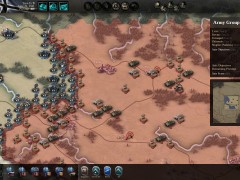
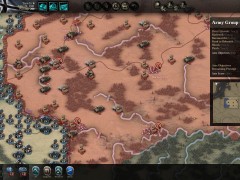
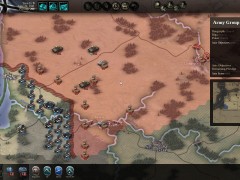
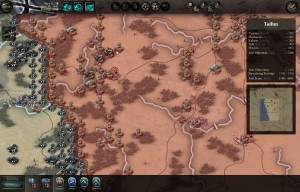
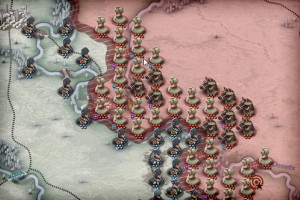
One Response to Designer Notes – Black Turn DLC